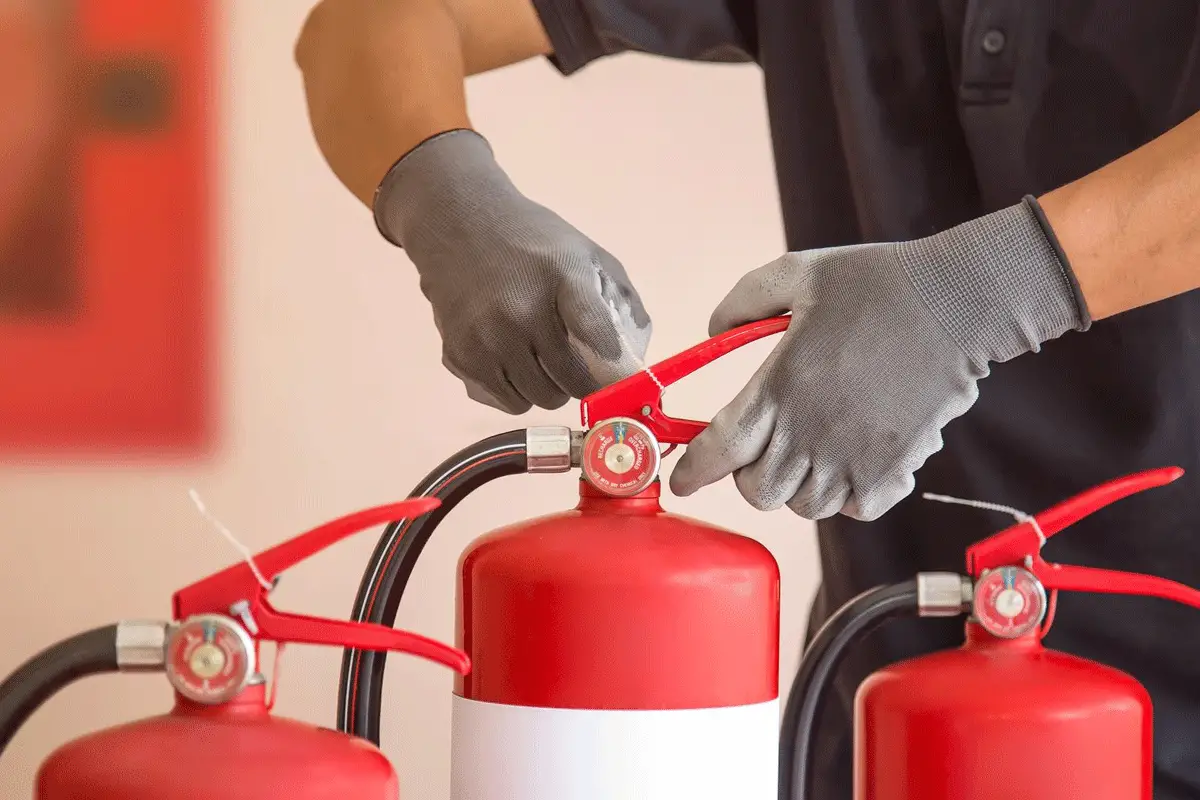Rechargeable fire extinguishers are a popular type of extinguisher used for fire emergencies. These reusable vessels offer a sustainable and cost-saving alternative to disposable units.
This article provides a comprehensive overview of what is a rechargeable fire extinguisher and how it works, as well as the pros and cons and maintenance factors to consider to help you decide if it’s the right fire safety solution for you.
Let’s get started.
What Is a Rechargeable Fire Extinguisher?
A rechargeable fire extinguisher is an extinguisher with a refillable pressure vessel, allowing it to be refilled and reused after being discharged in a fire emergency. Rechargeable fire extinguishers have a metal valve while disposable extinguishers have a plastic valve.
How Rechargeable Fire Extinguishers Work
Rechargeable fire extinguishers work on the same principle as all fire extinguishers to combat flames: internal pressure and agent expulsion.
- Internal Pressure: The rechargeable extinguisher is filled with a fire-fighting agent (water, foam, dry chemical, CO2) and pressurized with a gas (usually nitrogen). This internal pressure keeps the agent ready for discharge.
- Agent Expulsion: When you squeeze the handle, a metal valve opens, releasing the pressurized gas. This surge of gas forces the extinguishing agent out of the nozzle in a powerful stream, aiming it directly at the base of the fire.
Difference Between Disposable Extinguishers
The key difference between a rechargeable fire extinguisher and a disposable extinguisher lies in the pressure vessel. Unlike disposable extinguishers with a non-refillable canister, rechargeable models have a durable, metal, refillable pressure vessel.
This design allows a qualified technician to:
- Refill the Agent: Once you’ve used the rechargeable extinguisher, a professional can refill it with the appropriate extinguishing agent, restoring it to its original firefighting capacity.
- Repressurize the Vessel: The technician will also recharge the internal pressure with nitrogen gas, ensuring the extinguisher is ready to function effectively in case of another fire emergency.

Types of Rechargeable Fire Extinguishers
Rechargeable extinguishers come in various types, each suited for different fire classes:
Water
Rechargeable water extinguishers are effective against ordinary combustibles (wood, paper) but not suitable for electrical fires or flammable liquids.
Foam
Rechargeable foam extinguishers tackle fires involving flammable liquids (gasoline, oil) by smothering them with a foam blanket.
Dry Chemical
Rechargeable dry chemical extinguishers are versatile, fighting ordinary combustibles, flammable liquids, and some electrical fires.
CO2
Rechargeable CO2 extinguishers extinguish fires by displacing oxygen. They are ideal for electrical fires but not effective on burning materials like wood or paper.
Note: All fire extinguishers expire, including rechargeable units. For a detailed overview of the life expectancy for each type of extinguisher, see our dedicated guide on this topic: Do Fire Extinguishers Expire?
Advantages and Disadvantages of Rechargeable Fire Extinguishers
Advantages
- Cost-effective in the long run: While the initial cost might be higher, refilling a rechargeable extinguisher is cheaper than replacing disposable models after each use.
- Environmentally friendly: Reusing the same extinguisher reduces waste compared to disposable models that get thrown away after a single use.
- Consistent performance: Rechargeable extinguishers can be refilled with the same extinguishing agent, ensuring consistent performance over time.
Disadvantages
- Require professional maintenance and refilling: You’ll need to rely on qualified professionals to maintain and refill your extinguisher, which can involve additional costs. (See next section for more details.)
- Higher initial purchase cost: Generally, rechargeable extinguishers have a slightly higher upfront cost compared to disposable models.
Maintenance and Inspection of Rechargeable Fire Extinguishers
For optimal performance and safety, regular maintenance and inspection are crucial for rechargeable fire extinguishers.
- Inspections: Qualified professionals should inspect your extinguisher at least annually. This involves checking pressure levels, ensuring proper gauge functionality, and visually inspecting for any damage to the shell or hose. See our related guide on How Often Should Fire Extinguishers Be Inspected.
- Refilling: After discharging your extinguisher, don’t attempt to refill it yourself. Trained professionals have the expertise and equipment to safely refill it with the appropriate extinguishing agent. See our related guide on Where To Recharge A Fire Extinguisher.
Wrapping Up On Rechargeable Fire Extinguishers
Rechargeable fire extinguishers can be refilled and used again and again, making them a cost-effective and eco-friendly solution for fire safety. They also come in various types to suit different fire risks and require regular inspection and professional refilling for optimal performance.
Remember, having a functional fire extinguisher, regardless of type, is crucial for fire preparedness. Whether a rechargeable fire extinguisher best suits your needs and budget depends on your individual circumstances.
